Features
Conversation with Prince Phillip on BIA runway and President Premadasa’s genius for getting things done
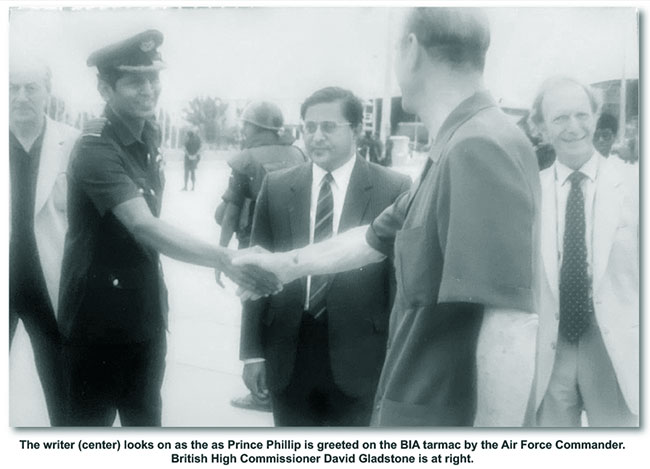
Excerpted from the memoirs of Chandra Wickremasinghe, Rtd. Addl. Secy to the President
When Emperor Hirohito of Japan passed away at an advanced age, and the Duke of Edinburgh was scheduled to touch down at Katunayaka Airport on his return flight, after attending the funeral. Wije (KHJ Wijeyadasa) wanted me ‘to do the honours’ as he put it, by receiving him after touch down and entertaining him to high tea at the VIP lounge. Accordingly, arrangements were made for myself and British High Commissioner David Gladstone to welcome the Duke and conduct him to the VIP lounge. This was the time when SL had to face the menace of terrorism on two fronts from the JVP and the LTTE and as a precautionary measure there was a tight security wrap provided for the Duke’s safety by crack Air Force troops under the Air Force Commander.
When the plane, which was a small jet, landed, I went up the ramp with HC Gladstone and greeted the Duke who was in the cockpit. After exchanging the usual pleasantries , the Duke said that he had piloted ‘this small thing’ and what he wanted most was to stretch his legs a bit. I told him that we had arranged tea for him in the lounge to which he replied that he would prefer to do a walk up and down the runway to stretch his tired limbs.
I observed that he was dressed in workaday denims. Whilst walking with the Duke in the company of the British HC and the Air Force Commander, along with the security escorts, I engaged him in a conversation enquiring how the funeral was and how the older Japanese people, reacted to their Emperor, who had seen the country through the cataclysmic WW11, passing away. The Duke responded with his characteristic acerbic humour saying ‘ Oh he was dying for a long time and the Japanese had got used to the idea’!
Then about the funeral itself, he said with his typically wry wit, ‘it was a rather long drawn ceremony with a lot of sticks and incense being burnt.’ As the day happened to be cloudy and without any sun I commented that it was not the best of weather we were having that day, to which he replied smiling ‘Oh, ours is infinitely worse.” I also took the opportunity to ask him about the motor vehicle he was supposed to have owned while in Trincomalee where he had served during WW11 as a Sub- Lieutenant in the Royal Navy, adding that there were many here who claimed that they owned the vehicle.
He laughed and said that he too had heard the story of his motor car being owned by a person here adding that as he did not have much money at the time he remembers buying a small Standard or an Austin which was even at that time in a somewhat ‘clapped out condition.’ Soon after his brisk stroll up and down the runway, he opted to board the plane and take off despite our pleas to have tea in the VIP lounge. I must say it was quite an experience meeting the Duke in person and listening to his witticisms which have now become legendary as they are some times mixed with the occasional faux pas, he is notorious for making.
President RP’s way of getting things done on the double
Just one month before he was assassinated by an LTTE suicide cadre, I remember Dayaratna, the President’s Co-ordinating Secretary meeting me and saying that the President wanted to see me. I enquired from Daya, who was a very amiable officer, whether there was a problem; he replied “I do not know, Sir, HE is there alone in the office waiting for you”. When I walked in somewhat apprehensively into his large office room, Daya approached him and said “Sir, Mr. Wickramasinghe is here.”
I remember the President looking at me quickly and saying in Sinhala “Chandra, I have a big problem”. I was taken by surprise when he addressed me by my first name which he had never done before. My immediate reaction was to try to figure out what this big problem was that he as President could not solve. While studying the relevant file, he spoke to me switching onto English this time and said “There are two MPs who are fighting to get an unused paddy store. One of the MP’s wishes to use the store to rehabilitate 32 ex-JVP cadres while the other is keen on converting the store into a vocational training centre to train the youth in the area in vocational skills. This has become a big headache to me”. He then looked at me and said “Here is the file, you examine the problem and summon the MPs and tell them how it should be settled and let me have your report in two days”. I was totally flabbergasted, wondering how I could possibly summon MPs to appear before me and further, to tell them how the matter should be resolved. I had very little sleep that night and remember telling my wife that I regretted ever having joined the Presidential Secretariat.
It was in this despondent mood that I read through the file carefully that night and mapped out a strategy in my mind. I wanted to start working on it the very next morning as the report had to be submitted to HE in two days. I had decided by then in my own mind that the more viable option was the establishment of a vocational training centre which could cater to the needs of the youth in the area. With this in mind, I phoned the Secretary/Ministry of Mahaweli Development (it was either AA Wijetunge or DG Premachandra) and enquired whether land with a perennial water course was available in one of the border areas (Mahaweli H Division). His first reaction was to reply in the negative.
I then told him that HE was keen on settling 32 JVP cadres in a suitable border area. Thinking it was the President who was behind the request, he asked for half an hour to check and get back to me. He rang me within 15 minutes to say that there was a suitable land available with a perennial stream running through it. I then revealed the plan I had in mind for the settlement of the 32 ex-insurgents on this land. I asked him how much of land could be given to each settler to which his reply was that the normal allotment of two and a half acres would be given. I told him ,the extent will have to be five acres, to which proposal he reluctantly agreed, again thinking that this was being suggested at the instance of the President.
On further enquiry by me as to how much money would be given to each allottee to put up a house, he replied that the normal Rs. 5,000/= would be made available. I told him that the amount will have Rs. 20,000/= as we had to take into account the special circumstances. Thinking once again that these were President Premadasa’s instructions, he agreed to give the enhanced amount. I then requested him to send me a blocking plan of the land showing the stream and a report on the extent to be allocated and the amount of money that would be given to build a house, via fax. In the meantime, I made arrangements with Army Headquarters to issue these 32 JVP cadres the necessary firearms (pump guns, they called them) and ammunition and to train them in the use of these weapons. I also remember quipping that as they were JVP cadres such training may be somewhat redundant.
That evening, I telephoned the two MPs to convey to them ‘the decisions made by the President’. The first MP I contacted was the one who wanted to utilize the store for the rehabilitation of the 32 insurgents. I started the conversation asking him whether there was a problem regarding a warehouse in that area. The MP immediately launched on a tirade against the other MP saying that the JVP cadres were after all ‘our own people’ who had to be rehabilitated and reintegrated into society. At this point I told the MP that the President had gone into the issue very carefully and had decided to make the warehouse available for a vocational training centre, as such a training centre would be beneficial to youth in the entire area.
He was naturally taken aback and smelling something fishy, asked me what would happen to the JVP youth to which query I replied that the President had a plan of settling them in System H of the Mahaweli project. The MP immediately countered saying that they would be killed off in no time by the LTTE. I assured him that arrangements will be made to provide suitable firearms to them to defend themselves. He then wanted to know the extent of the allotment that would be given and when I said that each would be given five acres expressed disbelief saying that the normal extent was two and a half acres per settler under the Mahaweli project. I had to reassure him that it would be five acres. When asked about the financial assistance that would be given to build a house and being informed by me that Rs. 20,000 would be given per settler, the MP could not contain his surprise as the usual assistance given for the purpose was Rs. 5,000.
I also assured him that there was a perennial stream running through the land that would provide water for irrigation. At this stage he asked me somewhat testily whose decisions these were and I answered him without demur that they were the President’s. He was silent for a moment before telling me rather forlornly “What’s to be done.” I knew the President wanted me to settle the issue in a reasonable manner and that he would not object to this kind of settlement which ensured that the ex-insurgents who were to be settled in ‘System H’ would be treated exceptionally, providing them much better facilities than what the normal Mahaweli settlers were entitled to, without summarily throwing them to the wolves, so to speak.
I do not think the MP himself was too unhappy when I detailed to him the special concessions and facilities that would be extended to the JVP settlers, deviating from what was laid down. Further, the manner in which the MP somewhat timorously ended the conversation, indicated that he was prepared to accept the arrangement which he thought was based on the President’s instructions. I think what troubled him more was that the other MP was getting what he wanted and that this meant a loss of face for him.
The other MP whom I telephoned thereafter, was jubilant that the President had decided to give the warehouse to him to start a vocational training centre and gave expression to his joy by praising the sagacity of the President in making the correct decision. The next morning I took the file back to the President and explained to him at length what I had done informing him at the same time that I had deviated a little from the normal entitlements of a Mahaweli settler in view of the special circumstances of the case. He only asked me what Secy/Mahaweli had said about the deviations and on my replying that he concurred in them given the special circumstances, seemed satisfied that the additional concessions given were quite in order.
The President however examined my report very carefully, going into all the relevant details including the availability of water etc. Finally, he asked me what the MPs had to say about the decision and on my telling him that they seemed to agree with the new proposals, turned to me and thanked me which was again something he rarely or never did. I cited this particular case to show President Premadasa’s way of managing contending parties posing seemingly intractable problems which virtually defied solution. Being a hard-nosed realist with a decidedly practical orientation in working out solutions to problems, what was uppermost in his scheme of things was to forge a quick practical solution.
This is why officials who worked for him were all the time on tenterhooks trying desperately to work out practical solutions to problems which prima facie, seemed impossible to be solved. What facilitated matters in seeking solutions to such virtually intractable problems was the fact that all concerned officials in Ministries, Departments, State Corporations and Public Authorities at the time, were only too eager to chip in and help. This is what made our work, though trying and oftentimes exasperating , still, most satisfying, when the particular problems were eventually, successfully settled.
Features
Africa gaining ground in intra-regional cooperation
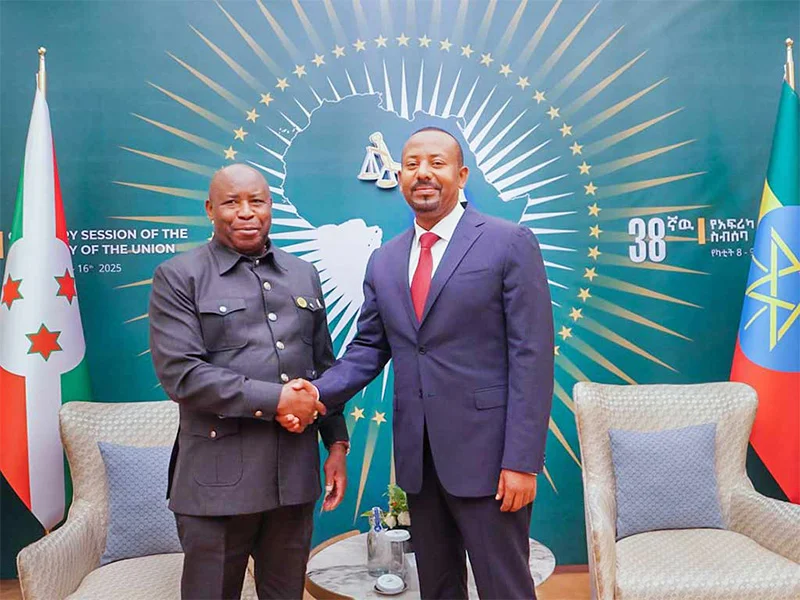
 At a time when the US is veering towards a policy of international isolation, it augurs well for international growth that Africa is emanating signs of stepping up intra-continental cooperation. Above all, Africa is in the process of proving that she could ‘stand-alone’ and be relatively autonomous in her ground-breaking growth drive.
At a time when the US is veering towards a policy of international isolation, it augurs well for international growth that Africa is emanating signs of stepping up intra-continental cooperation. Above all, Africa is in the process of proving that she could ‘stand-alone’ and be relatively autonomous in her ground-breaking growth drive.
Of course such epochal developments should not be construed as meaning that Africa would sooner rather than later be rid of the socio-political and economic bottlenecks that have been dogging her at heel for decades. What they mean is that she is managing these problems in a consistently constructive fashion currently.
We in South Asia in particular need to take note of these developments. This is mainly in view of the fact that SAARC is non-functional. It is not ‘dead’, as a former President of Sri Lanka tried to have us believe, but its virtual paralytic state at present should have discerning sections in the region concerned. It is robust regional cooperation in the fields that matter that helps a country in its growth and development and if SAARC is dysfunctional this is a serious setback for Sri Lanka and the region.
Closer integration into BIMSTEC and ASEAN is certainly desirable but if governments are having Sri Lanka’s best interests at heart it is primarily to the SAARC region that they need to look. For instance, how Sri Lanka is hoping to further its growth prospects by not factoring in stepped-up and positive economic interaction with India and Pakistan, for example, is incomprehensible.
There is a strong regional dimension to any country’s economic growth and unless the relevant regional cooperative mechanisms are rendered operational, the desired level of national development could not be achieved in full. Hence the need to render SAARC fully operational once again.
However, unless and until governments of the region realize the urgency of meeting the above challenge, SAARC would remain in a state inertia. The pressing need is visionary political leadership at the regional level. Right now this is seriously lacking.
It would seem inappropriate and misleading at first blush to attempt to draw comparisons between the vast continent of Africa and the South Asian region in view of the latter’s comparative geographical smallness, but this is more so why Africa’s present exercises in intra-continental cooperation need to be positivey assessed. If Africa could be making some headway in intra-regional cooperation, given her ‘Giant’ status and her seeming unmanageability as a collectivity, why can’t South Asia, a comparatively physically small region? ‘This is the Question’.
While the above and connected matters of importance for regional growth need to be seriously studied by political leaders and policymakers of South Asia, they would be acting in the regional interest by taking a leaf or two out of Africa’s book of cooperative growth and development.
All watchers of international development should feel compelled to take a hard, discerning look at the 38th African Union (AU) Summit held in Addis Ababa, beginning February 15th this year. Interestingly, the Summit theme was, ‘Justice for Africans and People of African Descent through Reparations.’
Coincidentally, erstwhile Namibian leader Dr. Sam Nujoma passed away on the eve of the Summit. Nujoma was perhaps the last of those prominent leaders from Africa who doggedly championed the cause of the libration of his country and of the continent from the shackles of colonialism. More leaders of his ilk are required by the South in general and Africa in particular.
While the acquiring of ‘reparations’ for colonialism’s ravages could prove a very long-gestation project, it is vitally important for Africa and other regions that came under colonial control to keep the issue constantly in focus.
Meanwhile, Africa’s gains in economic cooperation under the AU need to be studied appreciatively by the South and other regions in their interests. Some of the achievements of the AU under the aegis of the African Development Bank (ADB), as outlined by outgoing president of the Bank, Dr. Akinwumi A. Adesina at the Summit were: ‘515 million African lives were transformed over the past decade, including 231 million women, 127 million people gained access to better services in terms of health, 61 million people gained access to clean water, 33 million people benefited from improved sanitation, 46 million people gained access to ICT services, 25 million people gained access to electricity.’
Reports said that the Summit also, among other things, adopted the ‘African Financing Stability Mechanism’. Under this arrangement, $20 billion in debt refinancing will be provided for African nations. This will happen alongside the adoption of the ‘Strategic Framework on Key Actions to Achieve Inclusive Growth and Sustainable Development in Africa Report’.
The Report outlines key actions for Africa to ‘Achieve and sustain an annual growth rate of at least 7% of GDP over the next 5 decades.’
The above are a few aims that the AU intends to achieve going forward for the whole of Africa. But they are sufficient evidence of the current effectiveness of the collective organization. We see here a notable example in South-South cooperation which is a dire need today in the developing world.
South-South cooperation is the way to go particularly in consideration of the US’ current policy of virtually ridding itself of the past policy of helping the South by way of development assistance. Instead of bemoaning the fact that institutions, such as USAID, will be almost no more, the South would do well to take a hard look at Africa’s success stories in helping itself with little or no external assistance.
The discontinuation of US assistance needs to be seen as the proverbial ‘blessing in disguise’ by the South. Here is an opportunity for the Southern hemisphere to finally rid itself of those neo-colonial umbilical binds that have been preventing it from achieving genuine national liberation.
To be sure, the South is not going to meet with spectacular success by adopting the African model in the near term. But if the model is doggedly persisted with by enlightened governments of the South some success is certain to accure to the hitherto ‘Wretched of the Earth’, going forward.
Features
Mrs. World Tshego Gaelae …doing it differently

While most of our pageant winners get involved in frivolous activities, during their reign, the 40th Mrs. World pageant winner, Tshego Gaelae, from South Africa, is keen to bring into the spotlight her country’s potential.
Before her departure for the Mrs. World pageant, held in Las Vegas, in the USA, in January, the Lawyer, Entrepreneur, Model and Digital Creator, said:
“I’m so excited to be sent not only as a delegate but a representative of those hopeful hearts that always want to see South Africa’s potential shine and win. I stand on the shoulders of icons, world champions, the Queens that have gone ahead of me, and of the world leaders that continue to ensure our global participation and impact.
“Thank you everyone for the support so far!”

A coke and a smile…with Sprite Cucumber her pick
Referring to the interview for the position of Mrs. World, Gaelae said: “We get to bring our most authentic self to advocate for the causes we want to advance through the most prestigious platform that is the Mrs World Pageant. What an honour to have such experienced judges who care to hear about what I want to achieve.”
The lead up to the prestigious Mrs. World event was doubly exciting for Gaelae as she got the opportunity to display not only her country’s creations but also check out certain nostalgic venues.
“We received the honour of being at the Elvis penthouse suite, at the Westgate Vegas! The space is spectacularly filled with iconic and historic presence, fit for the king that was Elvis Presley.”
The Mrs World participants spent an evening honouring Victoria’s Voice Foundation and Gaelae’s gift to the Foundation was a canvas shirt with President Nelson Mandela’s face printed on it. The shirt can either be worn or displayed in a frame, and Gaelae says she is so glad to have had the opportunity to present a piece of her beloved South Africa.”

The bangles she gifted to all the participants at the Mrs. World pageant
Gaelae went on to say: “I always joke about being Zulu in my past life, but on a serious note, I love the Zulu Culture so much, that I gifted my Mrs. World Pageant Sisters some beautiful bangles.”
They also visited the special Coca-Cola Store in Vegas, and got to taste some interesting flavours. And Gaelae’s pick … “Sprite Cucumber definitely wins for me.”
Mrs. World enthusiastically said that one of the biggest gifts she received out of her Mrs South Africa journey was that of sisterhood, “and it’s so amazing to come to the Mrs. World pageant and find it once again,” she went on to say.
“My roommate was the gorgeous Ishadi Amanda from Sri Lanka! We bonded with no delay, and laughed till we cried! I was literally paired with a sister from another mother.”
Tshego Gaelae also had a special comment to make regarding the article we published about her in The Island of 6th February, 2025.
“Thank you so much for the beautiful article and coverage.”
Features
Activate all that is good for your skin

 Hi! This week, too, I’m giving you some easy to prepare tips to help you achieve all that is good for your skin.
Hi! This week, too, I’m giving you some easy to prepare tips to help you achieve all that is good for your skin.
* Cucumber and Lemon:
Mix equal parts cucumber and lemon juice and apply the mixture on your face (avoiding eyes). Allow it to sit for 10 minutes and then rinse it off. This natural face beauty tip will brighten your skin tone and lighten blemishes, if used on a regular basis. The best aspect is that it is appropriate for all skin types!
* Tomatoes:
Scoop up the pulp of one tomato and apply it evenly on your face. Allow it to dry for 15 minutes before washing it off with warm water … to reveal a naturally radiant skin.
* Green Tea:
After steeping green tea in hot water for about 05 minutes, allow the tea to cool. Transfer the tea to a spray bottle and spray, in short bursts, or place a little amount onto a cotton pad and pat on your face after thoroughly cleaning it.
* Chilled Tea Bags:
A chilled black or green tea bag does wonders for your skin. This natural face beauty technique may rapidly reduce puffiness around the eyes, making them appear brighter and more alert. Place the tea bags on your eyelids and relax for 05 to 15 minutes while they perform their magic.
* Honey:
Applying a small amount of honey to your face every day is an excellent approach to getting healthy, bright skin. Honey’s absorbing properties draw out pollutants from skin pores and help completely cleanse your skin. Honey’s antibacterial effects heal and prevent acne. Honey’s antimicrobial qualities soothe skin irritation and protect skin from bacterial infections. Honey, has remarkable moisturising effects and is also a terrific relief for dry skin.
* Coffee:
Exfoliating on a regular basis improves the appearance of your skin, making it look younger and healthier. For those who enjoy coffee, a homemade coffee scrub is all the weekly nourishment your skin requires. Coffee’s anti-inflammatory qualities minimize redness, irritation, and acne. All you need to do is mix freshly ground coffee beans, coconut oil, and brown sugar to your desired consistency in a bowl. Massage gently in circular strokes over your face, then rinse with warm water. After using an exfoliant, always moisturise.
-

 Sports5 days ago
Sports5 days agoRemarkable turnaround for Sri Lanka’s ODI team
-
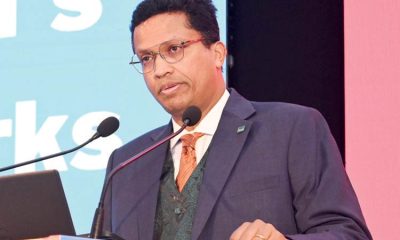
 Business5 days ago
Business5 days agoUN Global Compact Network Sri Lanka: Empowering Businesses to Lead Sustainability in 2025 & Beyond
-
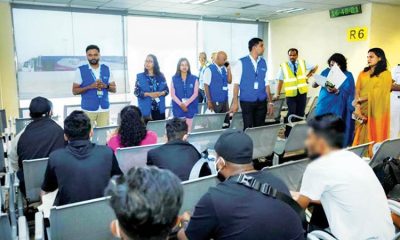
 Features5 days ago
Features5 days agoScammed and Stranded: The Dark Side of Sri Lanka’s Migration Industry
-
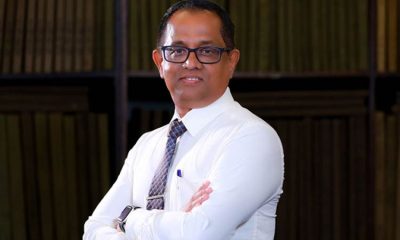
 News6 days ago
News6 days agoSpeaker agrees to probe allegations of ‘unethical funding’ by USAID
-
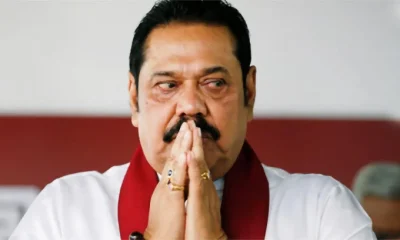
 Features4 days ago
Features4 days agoDon’t betray baiyas who voted you into power for lack of better alternative: a helpful warning to NPP – II
-
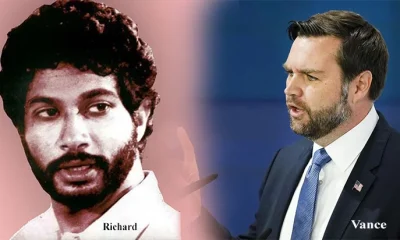
 Features4 days ago
Features4 days agoTwo films and comments
-

 Features7 days ago
Features7 days agoClean Sri Lanka and Noise Pollution (Part II)
-

 Editorial6 days ago
Editorial6 days agoCoal giant awakes, but uncertainty prevails











